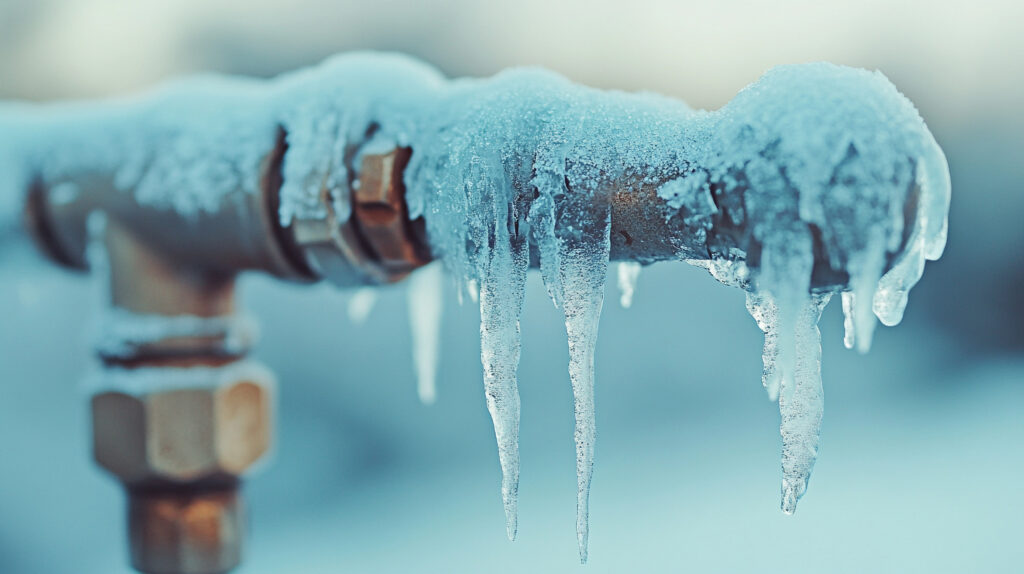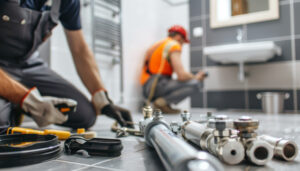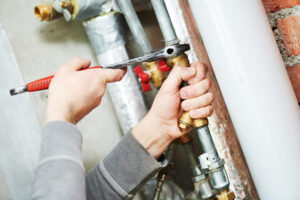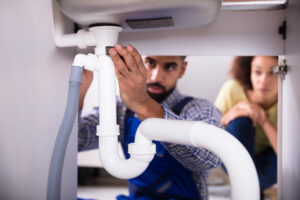If you’ve ever experienced that heart-stopping moment when you turn on your faucet on a frigid New Jersey morning and nothing comes out, you know the dread that follows.
That silence isn’t just inconvenient – it’s the opening scene of what could become an expensive disaster movie starring your home’s plumbing system.
The Garden State’s
Winter Warning Signs
New Jersey winters don’t mess around.

How Does Your House Plumbing Withstand The Cold
One day you’re enjoying a mild December afternoon, and the next you’re battling temperatures that make polar bears look overdressed. It’s this temperature tango that makes our state particularly prone to frozen pipe disasters. When the mercury dips below 20°F, which happens more often than we’d like in places from Monmouth County to Cape May, your pipes start playing a dangerous game of freeze tag.
The Physics of Frozen Frustration
Here’s what’s really happening inside those pipes when winter decides to flex its muscles: Water molecules, usually happy to flow freely through your plumbing, start doing their best impression of a flash mob. They slow down, cluster together, and eventually form ice crystals. But unlike your kid’s science fair project, this crystallization comes with a plot twist – water expands by about 9% when it freezes. In the confined space of a pipe, this expansion is about as welcome as a Giants fan at an Eagles tailgate.
The Most Vulnerable Spots in Your Home
The Usual Suspects
Your home has certain areas that are particularly susceptible to frozen pipes, like that one friend who always catches a cold first. Unheated basements, crawl spaces, and exterior walls are prime targets. That garage bathroom you’re so proud of? It’s basically asking for trouble during a cold snap. Even pipes running through supposedly “indoor” spaces can freeze if they’re nestled against an exterior wall with inadequate insulation.
The Hidden Troublemakers
But here’s where it gets tricky – some of the most vulnerable pipes aren’t even in the cold spots you’d expect. That plumbing running through your kitchen cabinet against an exterior wall? It’s more exposed than you think. And those pipes in your finished basement ceiling? They might be flirting with freezing temperatures without you even knowing it.
Prevention: Your First Line of Defense
The Simple Steps That Save Thousands
Let’s talk prevention, because nobody wants to star in their own personal plumbing horror story. First up: keeping your home warm. Yes, we all love saving on heating bills, but dropping your thermostat below 55°F while you’re visiting relatives in Florida is like inviting Jack Frost to redecorate your plumbing. Keep those interior doors open, even to rarely used rooms. Your pipes need to feel the love (and warmth) just like the rest of your home.
Insulation: Your Pipes’ Winter Coat
Think of pipe insulation as a cozy jacket for your plumbing. Those foam sleeves you’ve been meaning to install since last winter? They’re not just for show. They’re like thermal underwear for your pipes, and in New Jersey’s winter weather, every layer counts. And while you’re at it, seal those drafts around pipes entering your home. They’re like leaving the door open during a blizzard – on a microscopic level.
The Emergency Protocol
When Prevention Fails: The Early Warning Signs
Sometimes, despite your best efforts, pipes start to freeze. The key is catching it early. If your faucet starts acting like a teenager (you know, barely responding when you try to get its attention), you might have a problem brewing. A trickle of water instead of your usual flow? That’s your pipes sending up a distress signal.
The Immediate Response Plan
If you suspect a pipe is frozen but hasn’t burst (yet), you’ve entered the critical response window. Turn on the affected faucet – yes, even though nothing’s coming out. This releases pressure in the system, which is crucial for preventing a burst. Then, start warming the suspected frozen area. But let’s be clear: no blowtorches, no open flames. We’re trying to prevent a disaster here, not star in one.
The Professional Perspective
Local New Jersey plumbers have seen it all, from the minor inconveniences to the “honey, the living room is now a swimming pool” scenarios. They unanimously agree that the cost of prevention is pennies compared to the price of pipe repair and water damage restoration. Many offer pre-winter inspections that can spot potential issues before they become headlines in your family’s group chat.
The Long-Term Solutions
Think of protecting your pipes as a home improvement investment. Those smart thermostats that alert you when temperatures drop dangerously low? Worth every penny. The extra insulation in your attic and crawl spaces? Consider it insurance for your plumbing. Even something as simple as an exterior faucet cover could save you thousands in repair costs.
As another New Jersey winter approaches, remember that your home’s plumbing system is like a silent guardian, working tirelessly to provide you with clean, running water. Give it the protection it deserves, and it’ll keep your winter focused on hot chocolate and sledding rather than emergency plumber visits and water damage claims. After all, the only ice you want to deal with this winter should be in your drink or on your driveway – not in your pipes.





